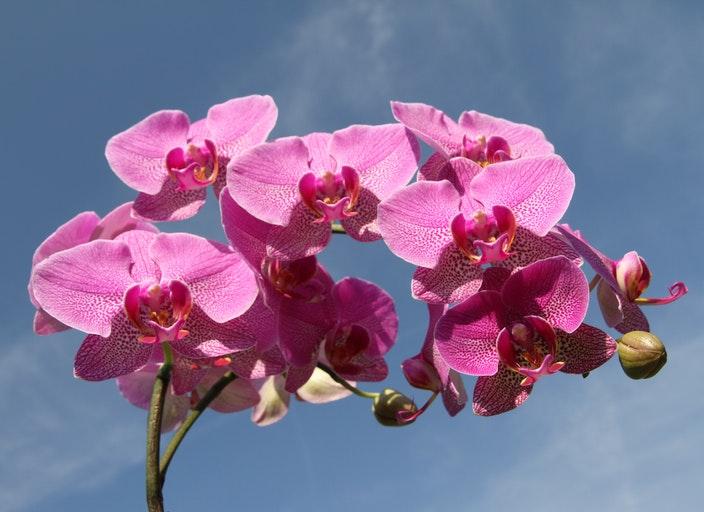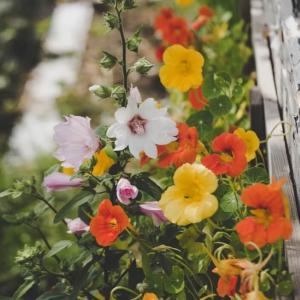
An orchid's bloom is a pleasant task and a certain indication of a healthy plant. However, failure to bloom is merely one indicator that the orchid is in trouble. Paying attention to the plant's development and leaves when it is not in bloom will enable you to see issues as they arise and take the required actions to address them. Here are some suggestions to assist you in restoring your sick orchid to health.
My Orchid Won't Bloom: Why?
Most orchid foliage is not especially appealing, unless you like waxy, spathe-like leaves, protruding stems, and sproingy air roots. The blossoms of approximately 30,000 species of orchids symbolize the beautiful art of the plant world, ranging from vibrant dancing butterflies to baby booties. 1 The good news is that the majority of orchids bloom for up to three months on average, and some species even bloom twice a year. Therefore, you probably need to change your care routine if your orchid hasn't bloomed at least once a year but the leaves are reproducing, have nice color, and are free of pests and blemishes.
Regular Maintenance Is Crucial
Orchids may be found growing in a variety of environments worldwide, including woods, alpine rainforests, and tropical jungles. Find out where your orchid normally grows and try to replicate the environment there as precisely as you can. Orchids need the same care as other flowering plants, yet they have different demands. Here are some things to think about:
Temperature: Should you supply both a warm and a chilly time for your species of orchids, or does it need continuously warm temperatures? For many species to bloom, the nighttime temperature must be lower. Bud drop may result from excessive temperature variation. Place the orchid somewhere where the temperature is more stable.
The orchid can absorb moisture from the air via its leaf and roots, and this is known as humidity (in epiphytic species). If you decide on this kind of orchid, misting may be necessary to promote bloom. Use a spray bottle to softly sprinkle the air around the plants if your mister is set up to avoid soaking the foliage. A layer of wet stones underneath your plant might also assist to increase humidity. When your orchid is blooming, avoid misting.
For healthy foliage and blooms, does your orchid prefer direct sunlight or indirect light? Placing your plant in the right kind of light might be the difference between a stunning annual or twice-yearly bloom time and uninteresting greens. Review the plant's normal development and rest intervals and keep your orchid in complete darkness at night if it won't bloom.
Water: After blooming, the majority of orchids enter a period of hibernation during which their water requirements are lowered. However, depending on the variety of orchid, watering needs may vary greatly from the first evidence of new growth (often a new leaf) until bloom. Your plant won't stay in optimal condition if you just water it once a week all year long. The watering schedule must be changed to accommodate the particular requirements of the orchid you are raising. Withhold water and repot the orchid in dry potting soil if the leaves start to wilt and the growth at the base of the plant turns mushy.
Fertilizer: Because they consume a lot of food, orchids do best in an atmosphere with a pH between 5.5 and 6.5. The majority of growth medium for these plants won't have enough nutrients, thus adding orchid food or a balanced fertilizer has to be a regular part of maintenance. Water soluble orchid feeding is practical and may be added to your suggested watering regimen. This works well since watering is often decreased during the orchid's dormant season, which is also when fertilizer should be avoided throughout the plant's yearly cycle. Overfertilization is seldom a concern, but for certain species, it's advised to cut the fertilizer's strength in half to a quarter.
Determine and address foliage issues
Like all other flowering plants, orchids have a blooming phase. However, when they aren't in bloom, we turn to the leaves to spot and fix issues. You may need to adjust your care plan if your orchid isn't generating new leaves or if the leaves seem sickly despite your regular maintenance routine. Alternatively, the issue might be a disease or a pest infestation.
No New Leaves Are Developing
Most orchids will enter a period of dormancy after bloom during which no new growth will be seen. When there are prolonged periods of insufficient light in the winter, new growth might also stall or cease. Keep the potting material equally wet during this time, cut down on water, and refrain from fertilizer. This is a normal stage of an orchid's growth cycle.
Leaves Fall Off and Turn Yellow
With orchids, the loss of the bottom-most leaves happens naturally. Older leaves will ultimately turn yellow and fall off as new leaves emerge. Overexposure to sunshine or water may also cause leaves to become yellow. If so, relocate the plant to a cool location and stop watering it for a few weeks.
Plant disease in orchids
The illnesses caused by bacteria, fungi, and viruses may affect orchids. Various viruses affect different orchid species in different ways. The cattleya orchid's leaves develop pitting due to the Cymbidium mosaic virus. Other viruses induce aberrant patterning in shades of yellow and brown as well as bright and dark stripes on the leaves. If the plant does manage to blossom, the flowers may be brittle and fleeting in nature. Check the plant at an agricultural experiment station if you think it could be infected with a virus. Sadly, there is no treatment for orchid viruses. Get rid of the sick plant and disinfect the container before using it again to prevent spreading the infection to other plants in your collection.
Infections caused by bacteria and fungi include brown rot, which appears as a pale brown spot on a leaf and swiftly spreads throughout the plant. Sunken brown, yellow, or reddish dots or streaks are the result of bacterial leaf spot on leaves. These illnesses, which often arise from excessive humidity, cause the leaf tissues to collapse and give the impression of being saturated in water. When you water your orchids in the morning, the foliage has time to dry before the temperature drops at night. Remove the infected sections of the orchid, isolate it right away, and change the potting material if you suspect an infection. While the plant is healing, you may apply a fungicide to the wounds and then reduce water and humidity. Before repotting the orchid, wash the pot with a solution of mild soap and water, and be careful to sanitize the equipment to prevent infection from spreading to neighboring plants.
Plant Pests
Weevils, sowbugs, springtails, snails, scale, thrips, mealybugs, and spider mites are a few of the nuisance insects. Look for leaves that seem to have been chewed on or those have what seems to be white powder on the undersides. Light infestations may often be brushed off with soap and water or eliminated by hand. For severe infestations, try neem oil, hydrogen peroxide, or isopropyl alcohol. However, if there are large populations of small insects like thrips and spider mites, a pesticide treatment may be necessary.
文章
还没有人评论,快来抢沙发!









